Single Pair Ethernet for Raspberry Pi
Single Pair Ethernet (SPE) is a technology that enables the transmission of Ethernet data over a single twisted pair of wires, as opposed to the traditional Ethernet which typically uses four pairs of twisted wires. This technology was developed to address the growing demand for connectivity in various industries, especially in scenarios where traditional Ethernet cabling might be impractical due to space, weight, or cost constraints. SPE is designed to provide Ethernet connectivity for devices that don’t require the high bandwidth provided by traditional Ethernet cables and can operate over shorter distances. It’s particularly useful in industrial applications, building automation, automotive systems, and the Internet of Things (IoT) devices, where the data requirements are relatively modest but reliable connectivity is essential.
Some key features and advantages of Single Pair Ethernet technology include:
- Cost and Space Efficiency: Using only a single twisted pair significantly reduces the amount of cabling required, which can lead to cost savings in materials and installation. Additionally, it’s ideal for compact devices and environments where space is limited.
- Power over Data Line: SPE can carry both data and power over the same pair of wires using Power over Data Line (PoDL) technology, eliminating the need for a separate power cable and simplifying installations.
- Compatibility: SPE can coexist with existing Ethernet technologies and can be integrated into Ethernet networks using appropriate converters and switches.
- Reliability: Single Pair Ethernet is designed with robustness in mind, making it suitable for industrial environments with electromagnetic interference and other challenging conditions.
- Standardization: Various organizations and industry bodies have been working on standardizing Single Pair Ethernet to ensure interoperability and widespread adoption.
- IoT Integration: As the Internet of Things continues to grow, SPE provides a cost-effective solution for connecting a large number of IoT devices without the need for extensive cabling.
It’s worth noting that Single Pair Ethernet comes in different variants, each optimized for specific use cases. These variants have different data rates, distances, and power capabilities to cater to diverse applications.
Overall, Single Pair Ethernet is a technology that offers a way to extend Ethernet connectivity into new realms, enabling efficient and reliable networking for devices and systems that were previously harder to connect using traditional Ethernet solutions.
It’s possible to order this board on our Shop.
DISCLAIMER
This project is Open Source, you can able to download both source and production files.
Distributed as-is, no warranty is given.
Porting from Arduino to Raspberry
The first test was performed on official Sparkfun KIT-19628 with the procedure described in ADIN1110 Hookup Guide.

After the SparkFun ADIN1110 Arduino Library installation we have used the following two examples
- Artemis_BasicSendRecieve
- ESP32_BasicSendRecieve
The Sparkfun documentation is always perfect and the test has work without problem.
SW PORTING
The SW porting was started from Arduino library and ESP32_BasicSendRecieve sketch. The IDE selected is Code::Blocks, that is free and works on Raspberry. The main activity on porting phase is the substitution of SPI Arduino primitive with the SPI Broadcom.
To install the library bcm2835 use the following steps:
- wget http://www.airspayce.com/mikem/bcm2835/bcm2835-1.73.tar.gz
- tar xvfz bcm2835-1.73.tar.gz
- cd bcm2835-1.73
- ./configure
- make
- sudo make install
Download SG_ADIN_Workspace_Codeblock
SW PORTING TEST
The SW porting test was performed with a COM-19038 board wired to Raspberry connector 20X2 pins. The vias marked in the following figure are very useful for connecting the Raspberry, the result is shown in following image
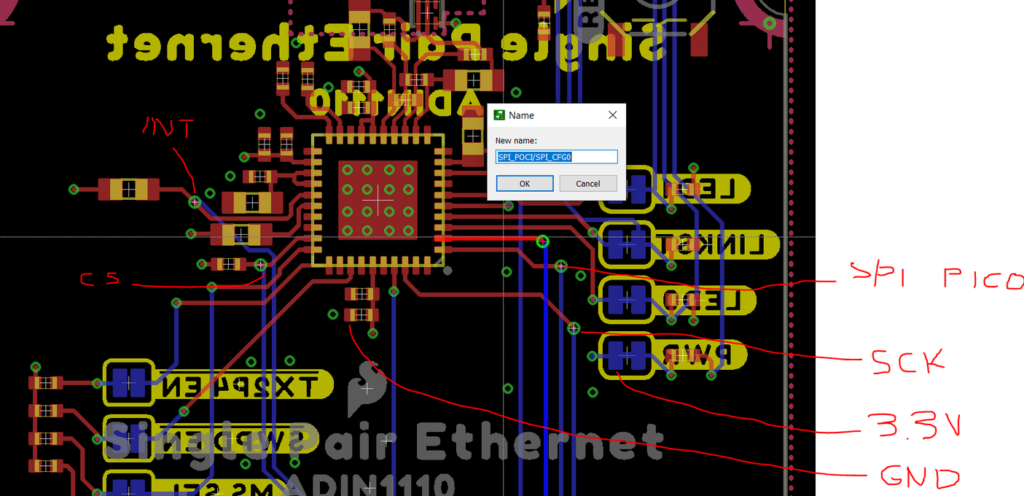
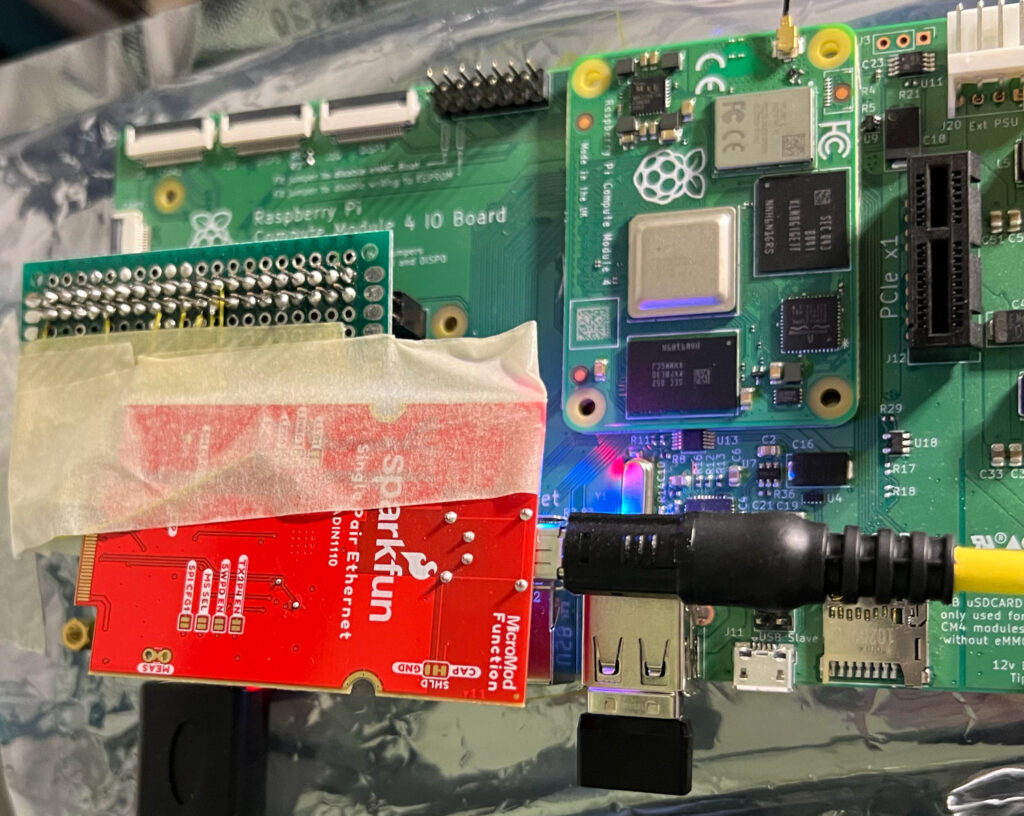
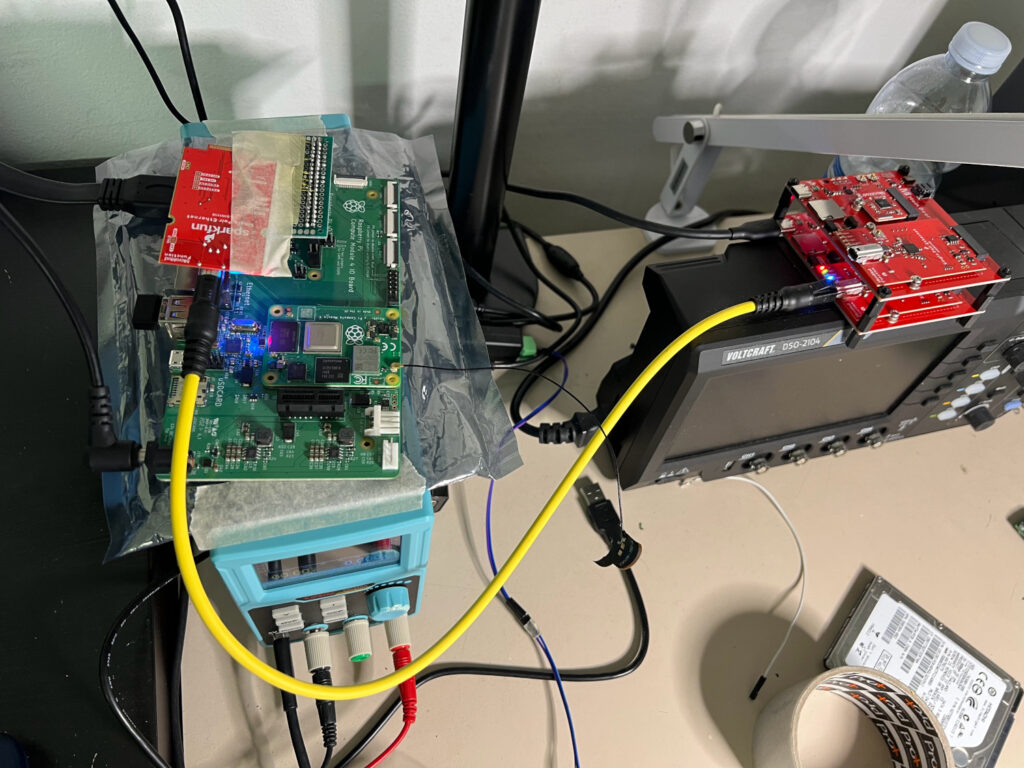
HARDWARE DESIGN
The board proposed in this document is a fusion of Sparkfun COM-19038 ADIN1110 Board schematic and AnalogDevice EVAL-ADIN1110. There are same minor differences between the two projects:
- SPE Connector
- Tranformer
- ESD/Surge protection
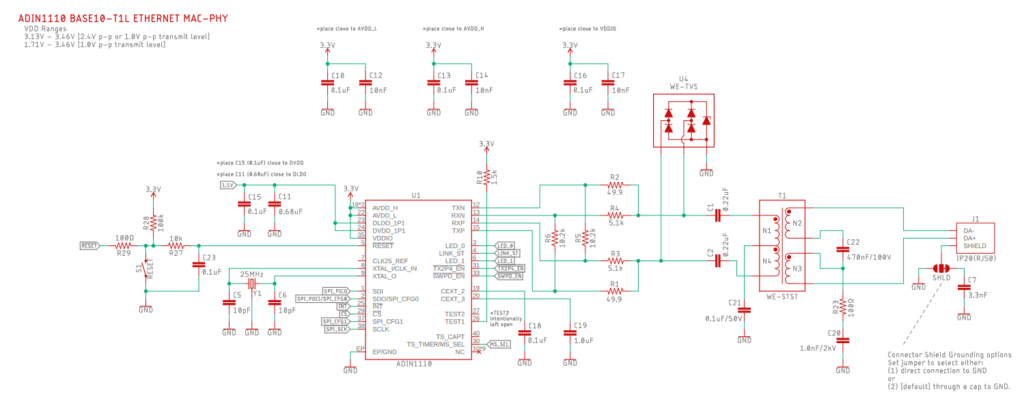
On our implementation we have preferred to modify the Sparkfun board with the protection circuit proposed in

But we have maintained both the SPE connectors :AH IP20 produced by Harting and 3-WAY Phoneix Contact 1803280

Considering that Raspberry PI has no RTC, we have ad one.

The solder jumpers are the same present on COM-19038.
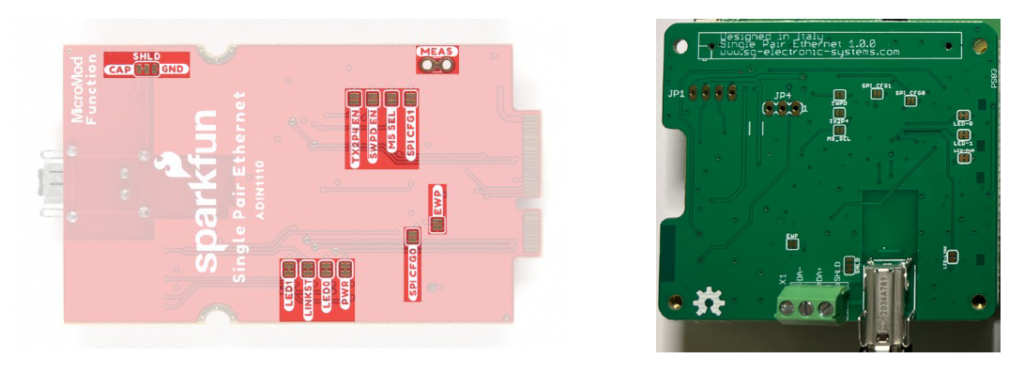
DESIGN FILES
HARDWARE TEST
Several components like ADIN1110 or SPE Jack are not available for small quantity production on our supplier. We have to solder them manually in our laboratory. After the communication check with logic analyzer we have connected the Sparkfun kit with MicroMod Artemis.
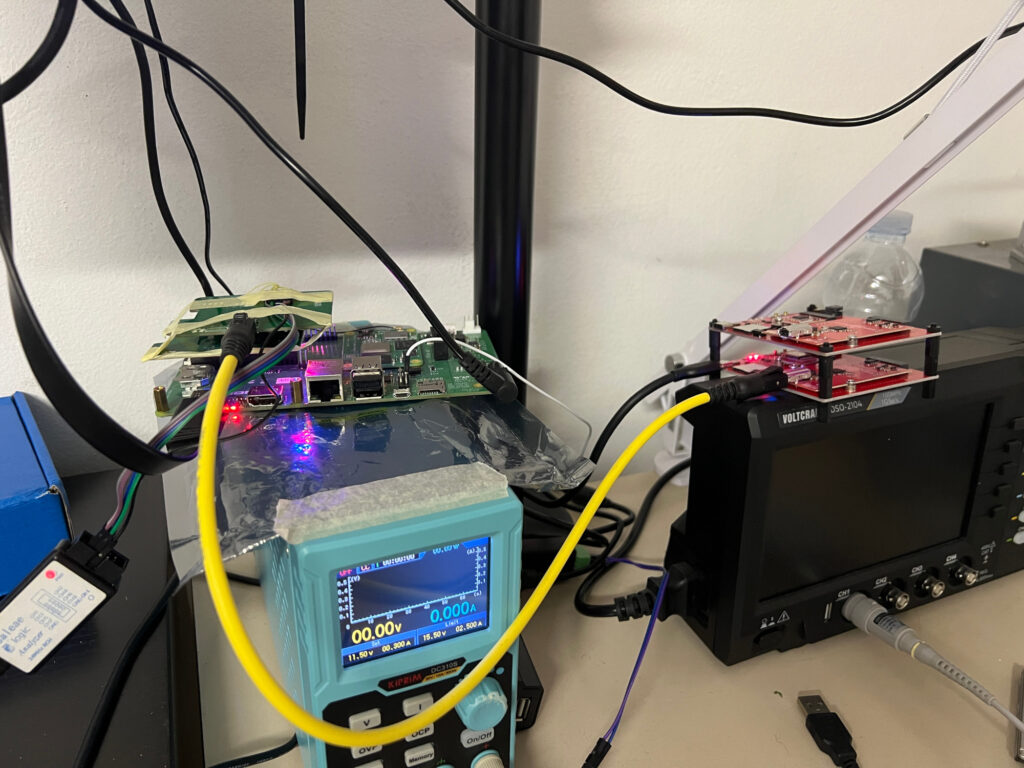
On Raspberry terminal is possible to see the same print of Arduino Terminal
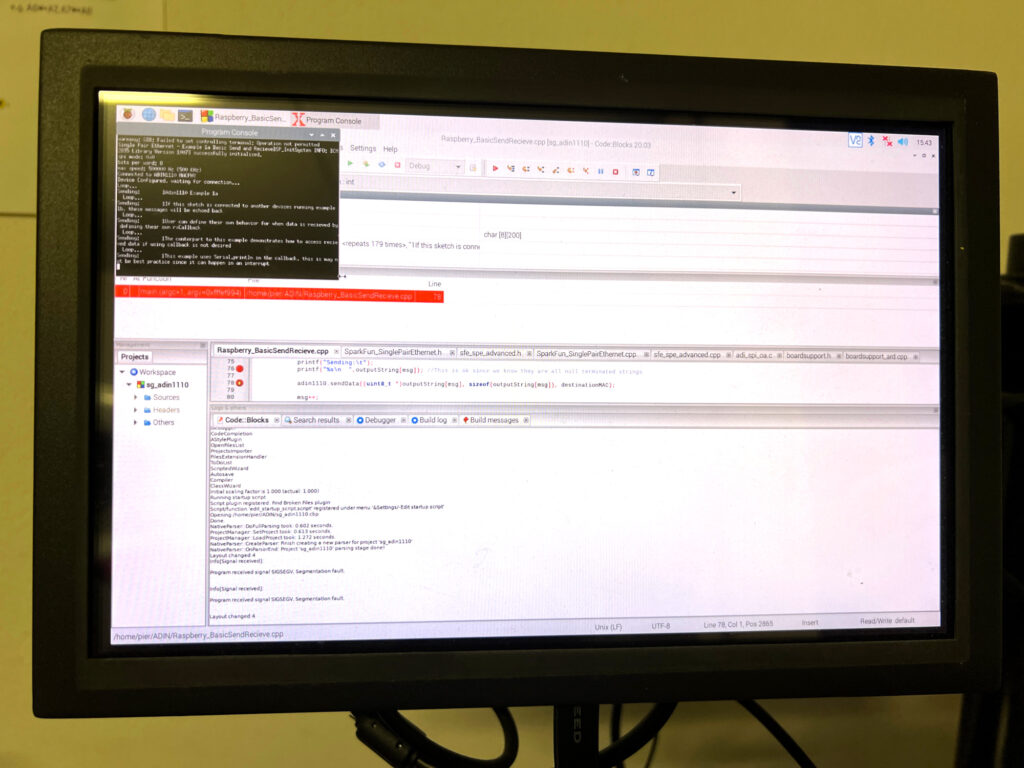
Conclusion
The Single Pair Ethernet seems to be very interesting, but its diffusion may be limited by an absent of native kernel integration like mcp2515 or SC16IS752.
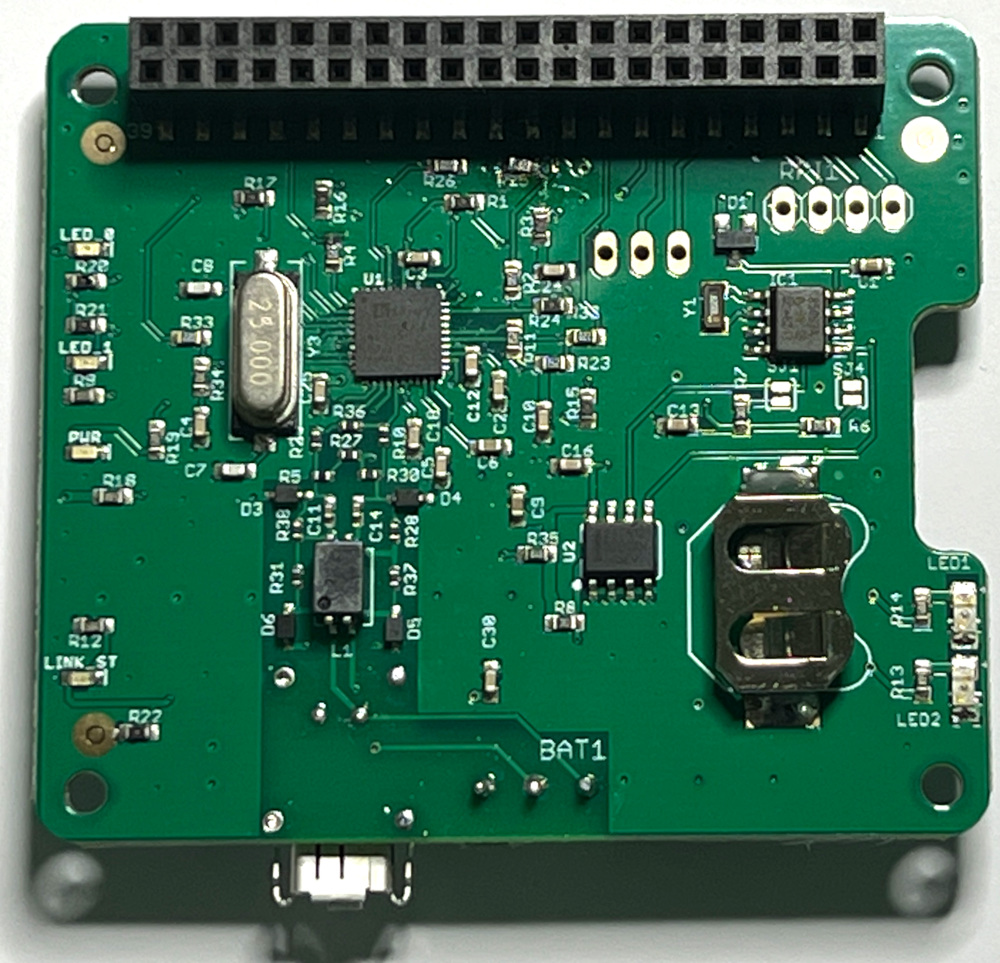
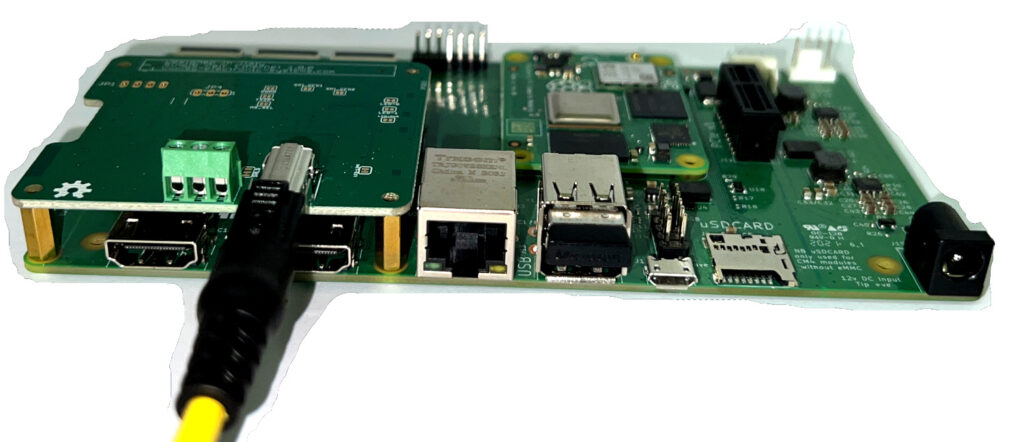
Leave a Reply